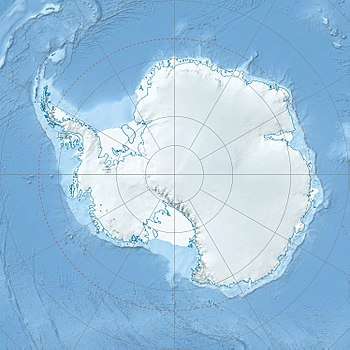Dibble Glacier
Dibble Glacier (66°17′S 134°36′E) in Antarctica is a prominent channel glacier flowing from the continental ice and terminating in a prominent tongue at the east side of Davis Bay. It was delineated from air photos taken by U.S. Navy Operation Highjump (1946–47), and named by the Advisory Committee on Antarctic Names for Jonas Dibble, ship's carpenter on the sloop Peacock of the United States Exploring Expedition (1838–42) under Charles Wilkes. Dibble is credited with leaving his sick bed and working 24 hours without relief with other carpenters to repair a broken rudder on the Peacock, when the ship was partially crushed in an ice bay in 151°19′E and forced to retire northward.[1]
| Dibble Glacier | |
|---|---|
 Map of Antarctica, with Wilkes Land slightly to the right | |
 Location of Dibble Glacier in Antarctica | |
| Location | Wilkes Land |
| Coordinates | 66°17′S 134°36′E |
| Thickness | unknown |
| Terminus | Davis Bay |
| Status | unknown |
References
- "Dibble Glacier". Geographic Names Information System. United States Geological Survey. Retrieved 2012-01-19.
![]()
| Types |
| ||||||
|---|---|---|---|---|---|---|---|
| Anatomy |
| ||||||
| Processes | |||||||
| Measurements | |||||||
| Volcanic relations | |||||||
| Landforms |
| ||||||
| |||||||